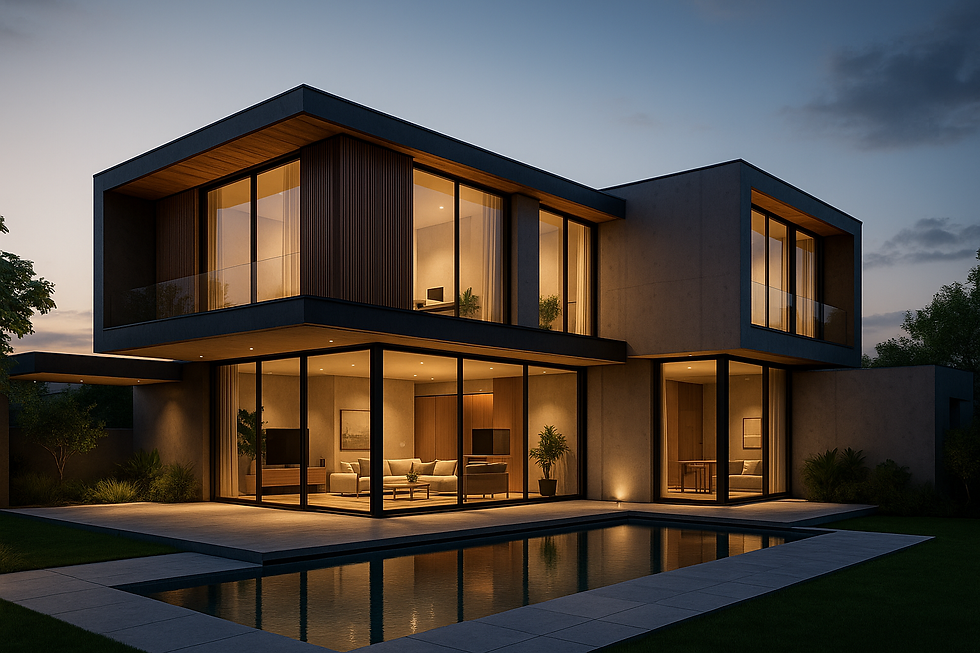Exploring Aztec Architecture: Temples, Pyramids & City Design
- Team DRS
- Oct 30
- 3 min read
History | Archaeology | Civilization | Ancient Architecture
Aztec architecture stands as one of the most sophisticated and symbolic building traditions in the ancient world. Known for towering pyramids, mathematically planned city layouts, and advanced engineering, the Aztec Empire reshaped the heart of Mesoamerica — especially through the creation of their iconic capital, Tenochtitlan, once home to over 200,000 people.
This article explores the features, symbolism, construction techniques, and most important monuments of Aztec temples, pyramids, and urban planning, while also highlighting major sites you can visit today.

✅ What is Aztec Architecture? — A Complete Overview
Aztec architecture refers to the monumental structures, urban layouts, and construction methods used by the Mexica people (the Aztecs) in Central Mexico between 1325–1521 CE.
Key Characteristics
✔ Monumental scale
✔ Symmetry and geometric design
✔ Religious symbolism in every structure
✔ Stone construction over artificial foundations
✔ Integration with water systems (canals, chinampas)
✔ Art + architecture + astronomy combined
Every building served religious, political, or military purposes. Architecture was seen as an extension of cosmology — linking the heavens, earth, and underworld.
🏛 City Design & Urban Planning — Tenochtitlan
The crown jewel of Aztec city planning was Tenochtitlan, a floating marvel built on Lake Texcoco.
Feature | Function |
Causeways & bridges | Connected city to the mainland |
Canals | Water transportation, like Venice |
Chinampas (floating gardens) | Efficient agriculture feeds the city |
Central Sacred Precinct | Political + religious heart |
Markets | Tlatelolco: up to 60,000 visitors daily |

⛩ Aztec Temples — Symbols of the Cosmos
Aztec temples were built as stepped pyramids with shrines at the top. Priests performed ceremonies there to honor the gods of war, agriculture, the sun, rain, and creation.
Construction Symbolism
Vertical ascent represented a journey toward the gods
Multiple staircases represented duality — particularly
Huitzilopochtli (war, sun)
Tlaloc (rain, fertility)
Red & blue paint— blood and water, the forces of life
Temples often stood in walled ceremonial precincts with schools (calmecac), ball courts, skull racks (tzompantli), and altars.
🏯 Iconic Aztec Pyramids
Unlike Egyptian pyramids, Aztec pyramids had flat tops for rituals — not tombs.
🔹 Templo Mayor (Main Temple of Tenochtitlan)
Dedicated to Huitzilopochtli and Tlaloc
60m tall, constantly expanded
Artifacts include the Coyolxauhqui Stone and sacrificial altars
Today, remains are preserved in Mexico City’s historic center.
🔹 Great Pyramid of Cholula
Largest pyramid by volume on Earth
Covered by a hill with a church on top today
Represents centuries of Mesoamerican construction, including Aztec influence
🔹 Tenayuca Pyramid
Double temple design — a signature Aztec style
Surrounded by coiled serpent sculptures

🔧 Engineering & Construction Techniques
Material | Use |
Basalt, limestone | Main structural stone |
Adobe and stucco | Walls + outer finishes |
Wood (rare) | Lintels, supports |
Volcanic tezontle | Light + strong foundation stone |
🎨 Art, Myth & Architecture Combined
Surfaces were decorated with:
✔ Serpents (Quetzalcoatl)
✔ Eagles & jaguars (military orders)
✔ Rain & water symbols (Tlaloc)
✔ Sun imagery (Huitzilopochtli)
Murals, carvings, and sculptures reinforced the power of the Triple Alliance and the belief that architecture maintained the balance of the universe.
🌎 Influence on Modern Architecture
Aztec principles inspire today’s architects through:
Symmetry & axial planning for civic spaces
Community plazas as social hubs
Sustainability concepts inspired by chinampas
Symbolic design integrated with culture
Mexican national identity heavily incorporates Aztec iconography — visible in museums, government buildings, and even currency.
📌 Must-Visit Aztec Architectural Sites Today
Site | Location | Highlight |
Templo Mayor | Mexico City | Ruins + world-class museum |
Tlatelolco | Mexico City | Market center remains |
Tenayuca | Mexico City metro area | Coatepantli serpent wall |
Cholula Pyramid | Puebla | World’s largest pyramid |
Malinalco Temple | State of Mexico | Rock-cut ceremonial complex |
🧠 Facts for Students, Historians & Travelers
The Aztecs built over 80 temples in Tenochtitlan alone
The Sacred Precinct covered 200,000+ m²
Aztec architecture blended science, astronomy, and religion
Everything aligned with cardinal directions to track the sun
Their structures were not simply buildings…They were machines for cosmic harmony.
🌟 Final Thoughts
Aztec architecture reflects the brilliance of a society that transformed a lake into a thriving metropolis and built monuments reaching toward the sun. Despite the empire’s fall in 1521, remnants of their temples, pyramids, and city design continue to inspire and inform the world.
If you are passionate about ancient civilizations, architecture, or travel, the Aztec world remains one of the most breathtaking chapters in human history.





Comments